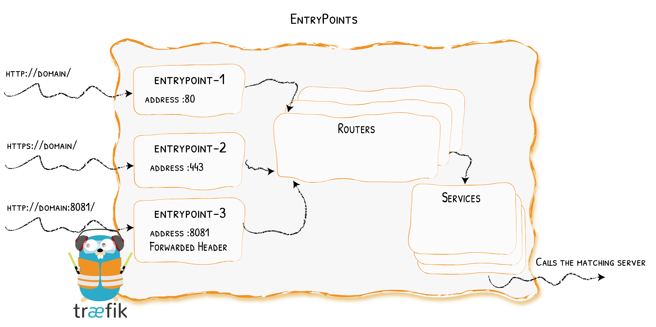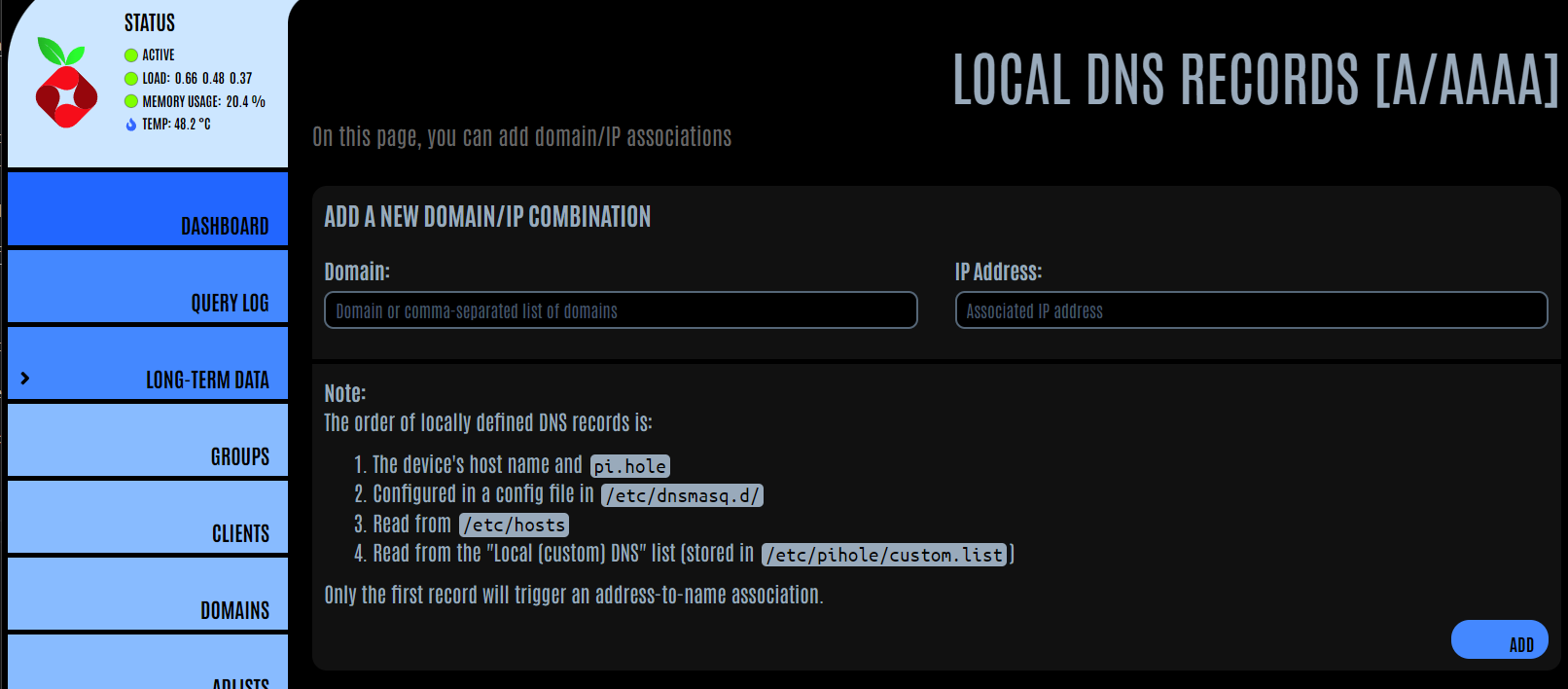Traefik - Entry Points

EntryPoints are the network entry points into Traefik. They define the port which will receive the packets, and whether to listen for TCP or UDP.

With my configuration, I have setup 5 entrypoints. 2 for internal, 2 for external and 1 for Prometheus metrics.
External EntryPoints
The external entrypoints are for my external services and have been setup on non-standard ports.
In order for this to work, I have had to create the neccessary port-forwarding rules within my Cloud Gateway Ultra.
Internal EntryPoints
The internal entrypoints are for my internal-only facing services and have been setup on http & https standard ports (80 & 443). To be able to connect to and use these services, the device requesting the connection would need to reside on the Local Area Network or be connected to the VPN.
I have created some local DNS records for the these internal subdomains to allow them to route internally. (as they wouldn't be able to route externally) This is done within my Pi-Hole's. I only need to create them on one Pi-Hole as Gravity Sync would then syncronise across to the other.
The local IP to specify here, would not be the IP Address of where the service is running, but the IP Address of where Traefik is running.

Defining EntryPoints
The entrypoints themselves are defined in the traefik.yml file. (section shown below)
Selecting an EntryPoint to use
Telling each service what entrypoint they are to use is pretty straight forward.
Labels
For services that run on the same host where traefik is installed, this is done with the use of Traefik Labels.
Below is an example section of the docker-compose file for Navidrome showing the different labels I have configured. You can see highlighted in the list is where the entrypoint to use is specified.
labels:
- traefik.enable=true
- traefik.http.services.navidrome.loadbalancer.server.port=4533
- traefik.http.routers.navidrome.entrypoints=websecure-int
- traefik.http.routers.navidrome.rule=Host(`sudomain.domain.co.uk`)
- traefik.http.routers.navidrome.tls=true
- traefik.http.routers.navidrome.tls.certresolver=production
- traefik.http.routers.navidrome.tls.domains[0].main=domain.co.uk
- traefik.http.routers.navidrome.tls.domains[0].sans=*.domain.co.uk
Dynamic File
For services that are running on a different host to where traefik is running, I can specify the entrypoint to use within the dynamic file I have setup for that service.
The example below, shows a basic dynamic file for Uptime-Kuma where, again highlighted, I have specified the entry point as "websecure-int"
http:
routers:
kuma:
entryPoints:
- "websecure-int"
rule: "Host(`sudomain.domain.co.uk`)"
tls:
certResolver: production
service: kuma
services:
kuma:
loadBalancer:
servers:
- url: "http://10.36.100.151:3001"
passHostHeader: true
Info
Technically, I can still do this for services running on the same host as Traefik and omit the labels and I have chosen to do this for some services (Grafana and Prometheus springs to mind here)